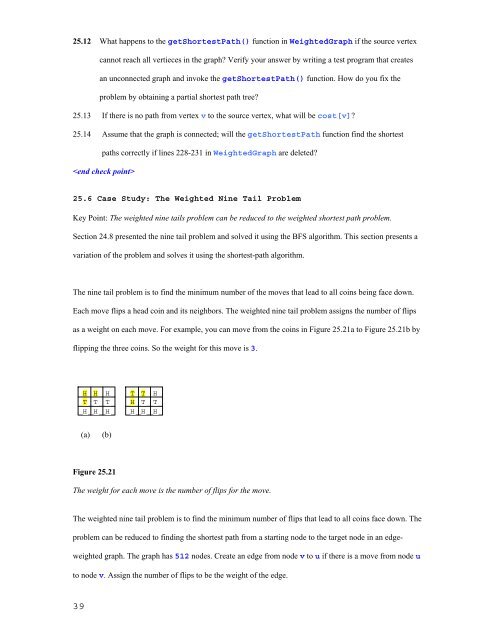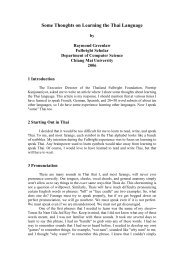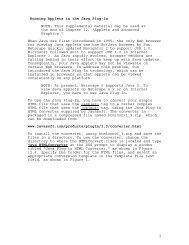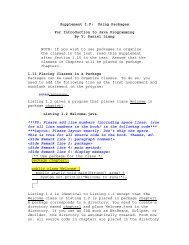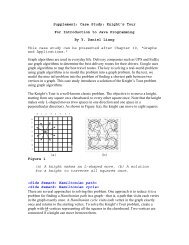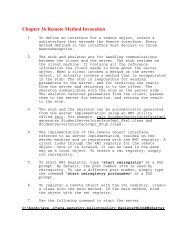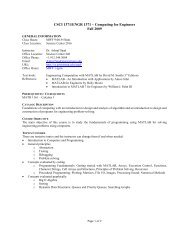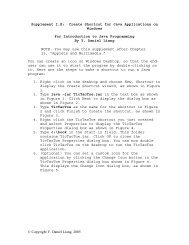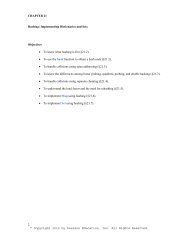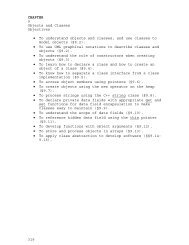CHAPTER 25 Weighted Graphs and Applications Objectives ⢠To ...
CHAPTER 25 Weighted Graphs and Applications Objectives ⢠To ...
CHAPTER 25 Weighted Graphs and Applications Objectives ⢠To ...
You also want an ePaper? Increase the reach of your titles
YUMPU automatically turns print PDFs into web optimized ePapers that Google loves.
<strong>25</strong>.12 What happens to the getShortestPath() function in <strong>Weighted</strong>Graph if the source vertex<br />
cannot reach all vertieces in the graph? Verify your answer by writing a test program that creates<br />
an unconnected graph <strong>and</strong> invoke the getShortestPath() function. How do you fix the<br />
problem by obtaining a partial shortest path tree?<br />
<strong>25</strong>.13 If there is no path from vertex v to the source vertex, what will be cost[v]?<br />
<strong>25</strong>.14 Assume that the graph is connected; will the getShortestPath function find the shortest<br />
paths correctly if lines 228-231 in <strong>Weighted</strong>Graph are deleted?<br />
<br />
<strong>25</strong>.6 Case Study: The <strong>Weighted</strong> Nine Tail Problem<br />
Key Point: The weighted nine tails problem can be reduced to the weighted shortest path problem.<br />
Section 24.8 presented the nine tail problem <strong>and</strong> solved it using the BFS algorithm. This section presents a<br />
variation of the problem <strong>and</strong> solves it using the shortest-path algorithm.<br />
The nine tail problem is to find the minimum number of the moves that lead to all coins being face down.<br />
Each move flips a head coin <strong>and</strong> its neighbors. The weighted nine tail problem assigns the number of flips<br />
as a weight on each move. For example, you can move from the coins in Figure <strong>25</strong>.21a to Figure <strong>25</strong>.21b by<br />
flipping the three coins. So the weight for this move is 3.<br />
H H H<br />
T T T<br />
H H H<br />
T T H<br />
H T T<br />
H H H<br />
(a)<br />
(b)<br />
Figure <strong>25</strong>.21<br />
The weight for each move is the number of flips for the move.<br />
The weighted nine tail problem is to find the minimum number of flips that lead to all coins face down. The<br />
problem can be reduced to finding the shortest path from a starting node to the target node in an edgeweighted<br />
graph. The graph has 512 nodes. Create an edge from node v to u if there is a move from node u<br />
to node v. Assign the number of flips to be the weight of the edge.<br />
39


